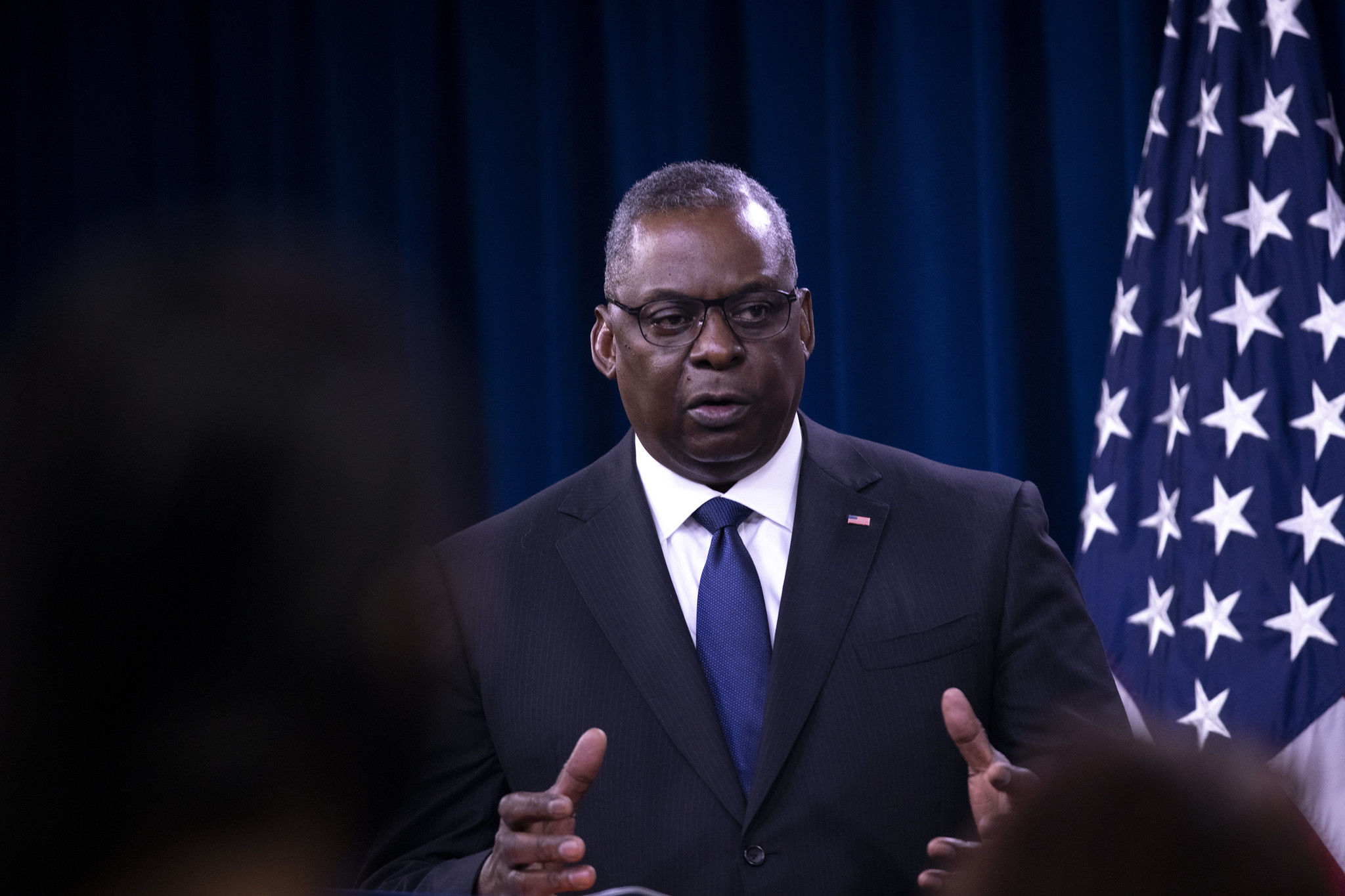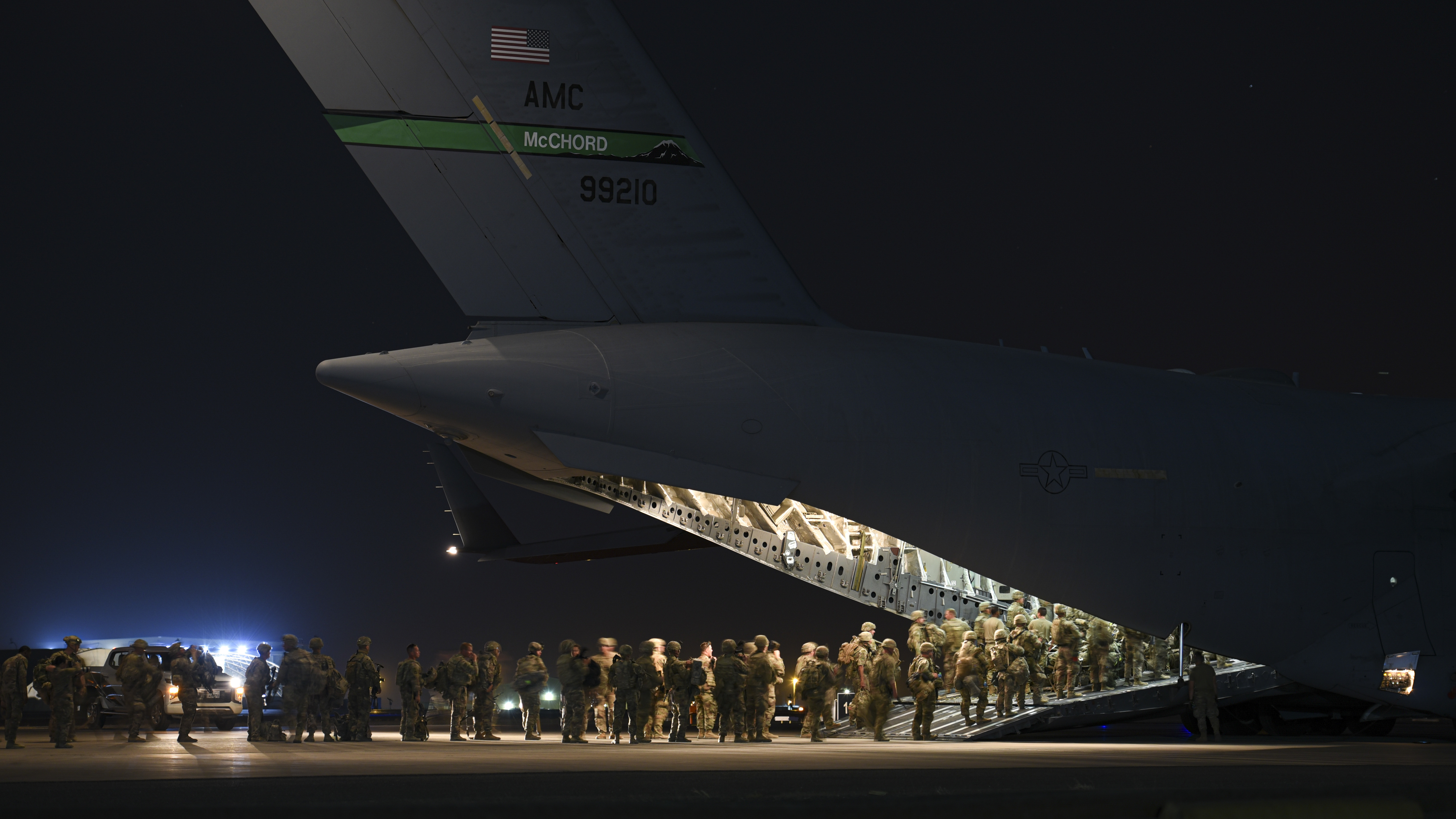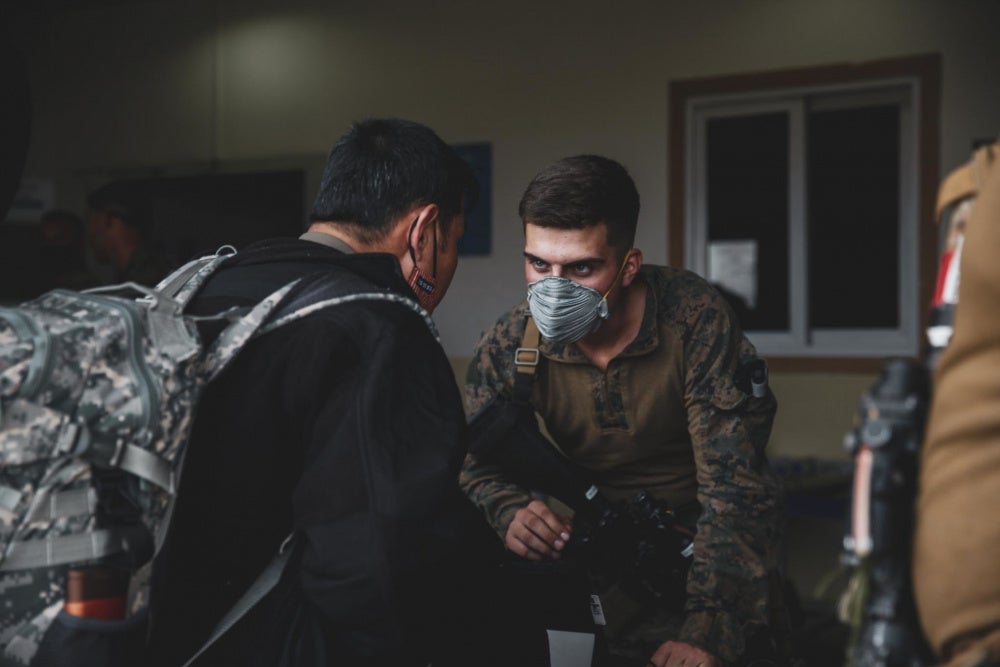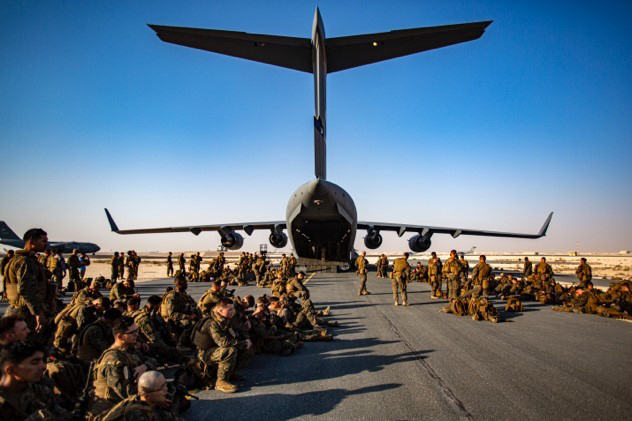
This post has been updated with a statement from President Joe Biden.
The U.S. doesn’t have enough troops in Kabul to secure safe passage for tens of thousands of Americans and Afghan allies seeking to leave the country, Secretary of Defense Lloyd Austin said in a press conference on Wednesday.
Now, there are a mix of 4,500 Marines, soldiers and airmen securing the Hamid Karzai International Airport to the north of the city and assisting in processing U.S. citizens and Afghans with Special Immigrant Visas for military flights out of the country.
The White Hose authorized up to 6,000 U.S. troops to support Operation Allied Rescue – the mission to evacuate Afghans who worked with the U.S. – and the parallel non-combatant evacuation operation that has yet to be named publicly.
While the airport is secure, there is no U.S. military-backed guarantee for safe passage for Americans through the city, according to a Wednesday notice from the U.S. embassy in Kabul.
Austin and Joint Chiefs of Staff Chairman Gen. Mark Milley told reporters on Wednesday that while there was the ability to rescue Americans in dire harm, “we don’t have the capability to go out and collect up large numbers of people,” Austin said.
Milley added that a move outside the boundaries of the airport would be “a policy decision. And if directed, we have capabilities that can execute whatever was directed.”
American forces are currently relying on a brittle truce with the Taliban, negotiated by the State Department and military leaders to allow passage of Americans and qualified Afghans to the airport through checkpoints, where several reports say qualified evacuees are denied passage and sometimes beaten.

“We do hear reports of people getting turned away from, from by checkpoints, we’ve gone back and tried to reinforce to the Taliban, that if they have credentials, they need to be allowed through,” Austin said.
Estimates vary, but there could be as many as 15,000 Americans in Afghanistan and tens of thousands of Afghans who qualify for U.S. Special Immigrant Visas. The U.S. has set an Aug. 31 deadline to complete the military pullout and reserved space for 22,000 SIV applicants at three military bases across the U.S., Pentagon spokesman John Kirby said on Wednesday.
President Joe Biden told ABC News that U.S. troops would remain in Afghanistan until they evacuations were complete in a Wednesday evening interview.
“We’re gonna stay to get them all out,” he said.
The operation will be the second-largest non-combatant evacuation operation in U.S. history, Milley told reporters.
The largest NEO to date was the 1991 evacuation of 20,000 U.S. service members and their families from Subic Bay Naval Base, Cubi Point Naval Air Station and Clark Air Base after the explosion of Mount Pinatubo in the Philippines, reported USNI News this week.
“We’re going to get everyone that we can possibly evacuate evacuated. And I’ll do that as long as we possibly can until the clock runs out, or we run out of capability,” Austin said.
The U.S. was building toward moving to an upper limit of 9,000 people aboard military transport planes with a plan for flights to leave hourly.
While a photo of a C-17 loaded with almost 700 people emerged over the weekend, most of the transports are averaging much fewer. In a 24-hour period, 18 C-17 Globemasters left Kabul with a total of 2,000 people aboard. That average is about 110 people per plane – or less than half the personnel transport capacity of a Globemaster. Reports from Kabul say some planes left with only a handful of people aboard.
On Wednesday, Austin said the largest barrier to evacuation was vetting people to get aboard the aircraft. Marines specializing in processing evacuees have recently arrived on the ground in Afghanistan to aid in the throughput, Pentagon officials said on Wednesday.

The Marines with the 24th Marine Expeditionary Unit who embarked with the Iwo Jima Amphibious Ready Group are part of the 4,500 U.S. troops that are currently securing the airport in Kabul.
“Some of the 4,500 include 1,300 Marines that are on deck and they are to continue to flow in there from the 24th Marine Expeditionary Unit and the Special Marine Air-Ground Task Force Crisis Response,” Kirby said.
“When we talked about sending this crisis response group, we’re also deploying some evacuation control teams from the Marines that do this really, really well in terms of helping the consular officers manifest and review the paperwork for incoming people,” Kirby said.
“That’s really what we’re focused on over the next 24 hours is how we are reviewing and helping the State Department process individuals qualified individuals to get manifested.”
The unit is part of the logistics component of the 24th MEU, which includes Marines who are trained in processing evacuees, a defense official confirmed to USNI News.
Marines from the 24th MEU were quietly moved off the three-ship ARG in early August and positioned in Kuwait to be transported via C-17 into Afghanistan in case of an armed evacuation. They were joined by elements of the Special Purpose Marine Air-Ground Task Force (MAGTF) Crisis Response – a 2,000-Marine unit based in U.S. Central Command.

“[Defense Secretary Lloyd Austin] forward-deployed troops, including Marines off of their ship and into Kuwait so that they can be more readily available,” Kirby said earlier this week.
In addition to the two Marine battalions, the U.S. has deployed a brigade of three infantry battalions from the 82nd Airborne Division and a battalion from the Minnesota National Guard to the airport. A battalion from the 10th Mountain Division is securing the U.S. embassy following the evacuation of its staff to the airport, Milley told reporters. In addition, there are unspecified special operations forces in the region.
Milley also stressed the U.S. ability to carry out airstrikes, referencing fighters and unmanned vehicles that could operate from other parts of the Middle East and from USS Ronald Reagan (CVN-76), which is currently operating in the North Arabian Sea. Milley did not address questions if the U.S. would consider taking and using the shuttered Bagram Airbase to help with the evacuation.
The U.K. is conducting their own parallel operation after sending in elements of the British Army’s 16 Air Assault Brigade to assist in evacuating British nationals and allied Afghans as part of Operation Pitting, the U.K. Ministry of Defence announced on Wednesday.





